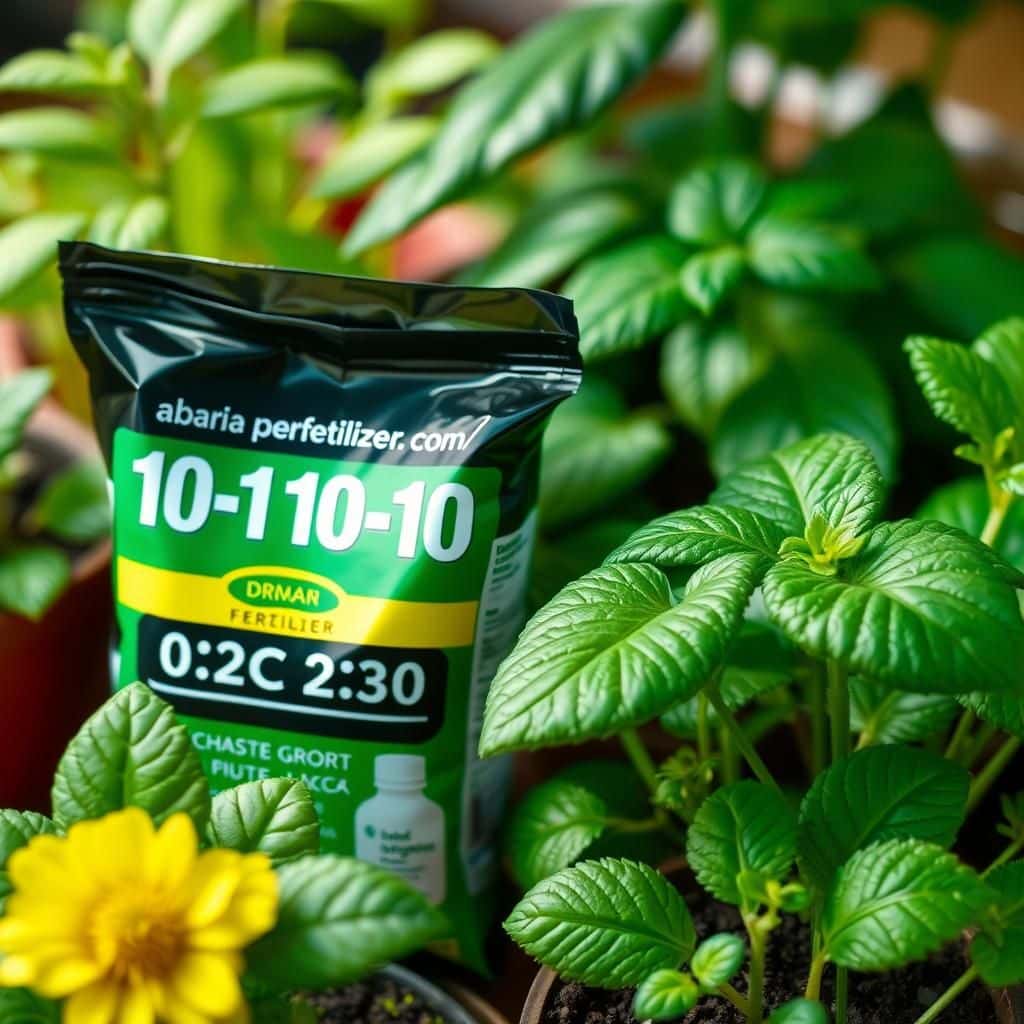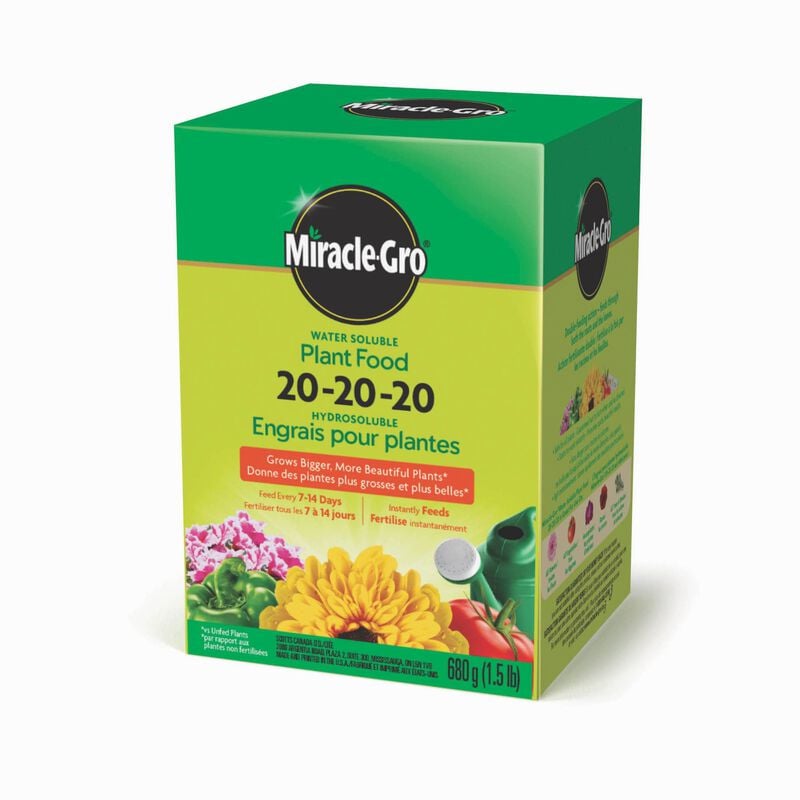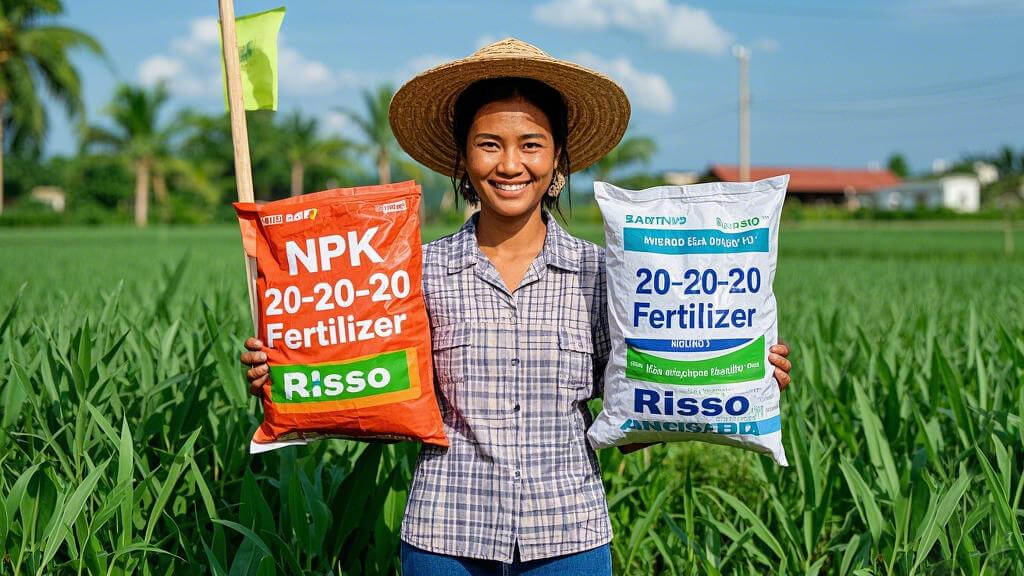What's the Difference Between 10-10-10 and 20-20-20 Fertilizer? A Comprehensive Guide to Choosing the Right Fertilizer for Your Plants

Fertilizers play a crucial role in promoting healthy plant growth, but with so many options available, understanding their differences can be overwhelming. Among the most common types are 10-10-10 and 20-20-20 fertilizers, each offering unique benefits depending on your gardening needs. This comprehensive guide will explore the key differences between these two formulations, including their nutrient ratios, applications, and suitability for various plants. By understanding these distinctions, you'll be better equipped to choose the right fertilizer for your garden, ensuring vibrant, thriving plants that bring your outdoor space to life.
Understanding the Difference Between 10-10-10 and 20-20-20 Fertilizer
The primary difference between 10-10-10 and 20-20-20 fertilizers lies in their N-P-K ratios; these numbers represent the relative percentage of nitrogen, phosphorus, and potassium in each formulation. The 10-10-10 fertilizer contains 10% of each nutrient, making it a balanced choice suitable for a variety of plants that require moderate feeding, while the 20-20-20 fertilizer is more concentrated, containing 20% of each nutrient, thus providing a stronger nutrient boost for plants that need higher feeding levels. This concentration makes the 20-20-20 fertilizer ideal for fast-growing plants or those that are heavily fruiting or flowering, whereas the 10-10-10 fertilizer is generally used as a general-purpose option for a broader range of garden plants.
N-P-K Ratio Explained
The N-P-K ratio is crucial for understanding fertilizers; it signifies the percentage of nitrogen, phosphorus, and potassium in a fertilizer, respectively. A ratio of 10-10-10 means that for every 100 parts of fertilizer, 10 parts are nitrogen, 10 parts are phosphorus, and 10 parts are potassium, indicating a balanced nutrient supply. In contrast, 20-20-20 provides a more robust concentration, ideal for nutrient-demanding plants.
Applications of 10-10-10 Fertilizer
10-10-10 fertilizer is often used for general garden maintenance because of its balanced nutrient supply. It is effective for a range of plants, including vegetables, flowers, and shrubs, as it promotes overall growth without overwhelming the plants with excessive nutrients. This makes it particularly suitable for maintaining healthy soil conditions and supporting a broad spectrum of plant types in various growth stages.
Applications of 20-20-20 Fertilizer
The 20-20-20 fertilizer is designed for use with high-demand plants, particularly those that require a significant nutrient boost during their growth cycles. This fertilizer is frequently used for potted plants, greenhouses, and gardens featuring heavy feeders like tomatoes and other fruit-bearing crops, as it helps facilitate rapid growth and blooming by supplying larger quantities of vital nutrients.
Potential Risks of Over-Fertilizing
Using fertilizers with a higher concentration, such as 20-20-20, carries the risk of over-fertilization, which can lead to nutrient burn. This occurs when plants receive too much of certain nutrients, resulting in damage to the roots and foliage. Care must be taken to follow application guidelines and adjust the frequency of use according to the specific needs of the plants, ensuring they receive sufficient nourishment without adverse effects.
Nutrient Needs of Different Plants
Plants have varying nutrient requirements based on their species, growth stage, and environmental conditions. For instance, seedlings and young plants typically benefit from more balanced fertilizers like 10-10-10, while established plants that are flowering or fruiting may thrive on higher concentrations such as 20-20-20. Understanding these differences is key to selecting the appropriate fertilizer for achieving optimal plant health and productivity.
| Fertilizer | N-P-K Ratio | Best Used For |
|---|---|---|
| 10-10-10 | 10-10-10 | General-purpose plants, moderate feeders |
| 20-20-20 | 20-20-20 | Heavy feeders, fast-growing plants |
What is the difference between 10-10-10 and 20-20-20 fertilizer?

The difference between 10-10-10 and 20-20-20 fertilizer lies mainly in their nutrient concentration and application rates. Both fertilizers are classified as all-purpose fertilizers, providing essential nutrients for plant growth, but the numbers indicate the percentage of the three primary nutrients: nitrogen (N), phosphorus (P), and potassium (K).
10-10-10 Fertilizer:
- This formulation has equal parts of nitrogen, phosphorus, and potassium, each at a concentration of 10%.
- It’s suitable for general gardening needs where a moderate nutrient supply is needed.
20-20-20 Fertilizer:
- This formulation contains higher concentrations of the same three key nutrients, each at 20%.
- It provides a more potent nutrient mix, ideal for feeding plants that require more intensive nutrition or during stages of rapid growth.
The choice between these fertilizers depends on the specific needs of the plants and the soil's nutrient status.
See also:
Understanding N-P-K Ratios
The N-P-K ratio refers to the proportions of nitrogen, phosphorus, and potassium in fertilizers. These three elements are critical for plant growth:
- Nitrogen: Promotes leafy, vegetative growth.
- Phosphorus: Encourages root development and flowering.
- Potassium: Enhances overall plant health and disease resistance.
When to Use 10-10-10 Fertilizer
10-10-10 fertilizer is often suited for general-purpose applications:
- Ideal for a wide range of plants in gardens and landscapes.
- Useful for maintaining soil fertility under normal conditions.
- Often used during the growing season to enhance plant vigor.
When to Use 20-20-20 Fertilizer
20-20-20 fertilizer is more effective during periods of increased growth demands:
- Best for plants in their rapid growth phases, such as vegetables or annual flowers.
- Beneficial for container plants that deplete nutrients quickly.
- Often used in hydroponic systems for immediate nutrient availability.
Application Rates and Dilution
The application rates for 10-10-10 and 20-20-20 fertilizers vary due to their nutrient concentrations:
- 10-10-10 might require frequent applications to match the nutrient uptake of fast-growing plants.
- 20-20-20 can be effectively diluted and used as a liquid feed for quick absorption.
- Understanding proper rates ensures plants receive adequate nutrition without over-fertilization.
Potential Risks of Over-Fertilization
Both fertilizers, if misused, can lead to risks such as nutrient burn:
- Over-application of either fertilizer can damage plant roots due to high salt concentrations.
- Excess nutrients can lead to nutrient imbalances in the soil.
- Runoff from over-fertilizing can cause environmental issues like eutrophication in nearby water bodies.
Impact on Soil Health
The choice between 10-10-10 and 20-20-20 can also influence soil health over time:
- 10-10-10 may maintain balanced soil fertility with less risk of depletion.
- 20-20-20, while providing quick nutrients, may require additional amendments to correct soil imbalances.
- Regular soil testing can help determine the most suitable fertilizer choice for long-term health.
What do you use 20/20/20 fertilizer for?

20/20/20 fertilizer is a balanced, all-purpose fertilizer that contains equal parts of three key nutrients: nitrogen (N), phosphorus (P), and potassium (K). Each number in the formulation represents the percentage by weight of these nutrients. It is particularly useful for promoting healthy plant growth across a wide range of applications, including gardens, lawns, and container plants. This type of fertilizer helps ensure that plants receive the necessary nutrients to thrive, which contributes to robust root development, flowering, and fruiting.
What Plants Benefit from 20/20/20 Fertilizer?
The versatility of 20/20/20 fertilizer allows it to be beneficial for a variety of plants. Generally, it can be used for:
- Vegetables: Promotes growth and yield in vegetable gardens.
- Ornamental Plants: Supports flowering and foliage health in shrubs and flowers.
- Houseplants: Provides essential nutrients for indoor plants.
How to Apply 20/20/20 Fertilizer
Applying 20/20/20 fertilizer requires careful attention to the recommended guidelines. Here’s how to apply it effectively:
- Mixing: Dilute the fertilizer in water according to the package instructions.
- Frequency: Apply every 4 to 6 weeks during the growing season.
- Method: Use a watering can or garden sprayer for even distribution.
Advantages of Using 20/20/20 Fertilizer
Using 20/20/20 fertilizer comes with several advantages, making it a popular choice for gardeners and growers:
- Balanced Nutrition: Provides equal nutrients which enhance overall plant growth.
- Ease of Use: Simple application process that suits various plant types.
- Quick Results: Fast-acting formula that can lead to noticeable improvements in a short time.
Potential Drawbacks of 20/20/20 Fertilizer
While 20/20/20 fertilizer is advantageous, it’s essential to be aware of potential drawbacks:
See also:
- Over-fertilization: Risk of burning plants if applied excessively.
- Nutrient Imbalance: May not suit all plant species; some require specific nutrient ratios.
- Environmental Impact: Risk of nutrient runoff affecting water sources if not used responsibly.
When to Use 20/20/20 Fertilizer
Timing is crucial for the effective application of 20/20/20 fertilizer. It's best used in:
- Early Growing Season: To give plants a boost as they begin to grow.
- During Flowering: Supports production of blooms and fruits.
- After Transplanting: Helps reduce transplant shock in new plants.
What are the disadvantages of 20-20-20 fertilizer?

The use of 20-20-20 fertilizer, which contains equal parts nitrogen, phosphorous, and potassium, can have several disadvantages. While it can be beneficial for many plants, there are notable downsides that gardeners and farmers should consider.
Potential Nutrient Imbalance
The primary disadvantage of 20-20-20 fertilizer is the risk of creating a nutrient imbalance in the soil. While it provides equal amounts of the three essential nutrients, many plants have different nutrient requirements. This can lead to over-fertilization of one nutrient while under-fertilizing another.
- The specific nutrient needs of different plants may not be met.
- Over-application can harm soil microbial life.
- Plants could exhibit signs of nutrient deficiency despite fertilization.
Over-Fertilization Risks
Using 20-20-20 fertilizer can lead to over-fertilization, especially if not applied according to recommendations. Excessive amounts of fertilizers can cause nutrient runoff and harm the environment as well as create toxic conditions in the soil.
- Runoff may contaminate local waterways.
- Excess nutrients can lead to plant burn and damage.
- Long-term soil health may degrade due to chemical buildup.
Pest and Disease Susceptibility
Another disadvantage is that high levels of nutrients can make plants more susceptible to pests and diseases. Rapid growth stimulated by fertilizers can sometimes compromise plant health.
- Rapid growth can lead to weak stems and branches.
- Over-fertilized plants may attract more pests.
- Subpar immune responses to diseases due to imbalance in nutrient intake.
Cost Factors
Costs associated with purchasing 20-20-20 fertilizer may be a concern for some gardeners. It is generally more expensive than other fertilizers specifically tailored to certain plants.
- Higher upfront costs can deter usage.
- Continuous application leads to greater overall expenditure.
- May require additional investments in soil amendments to counterbalance issues.
Environmental Impact
The environmental impact of using 20-20-20 fertilizer can be significant. The potential for nutrient runoff and pollution is a growing concern among environmentalists and sustainable farming practitioners.
- Runoff can lead to algae blooms in aquatic ecosystems.
- Contributes to soil degradation and reduced fertility over time.
- May harm beneficial wildlife and insects due to chemical presence.
Questions from Our Readers
What do the numbers mean in 10-10-10 and 20-20-20 fertilizers?
The numbers in fertilizers like 10-10-10 and 20-20-20 represent the percentage of the three key nutrients: nitrogen (N), phosphorus (P), and potassium (K). For example, in 10-10-10, each nutrient is present at a rate of 10%, whereas in 20-20-20, each nutrient is at 20%.
Which fertilizer should I use: 10-10-10 or 20-20-20?
The choice between 10-10-10 and 20-20-20 fertilizers depends on your plant's needs and the soil condition. If your plants require a higher concentration of nutrients due to rapid growth or poor soil conditions, 20-20-20 may be more suitable, while 10-10-10 is ideal for general use or when the soil is already nutrient-rich.
Can I use 20-20-20 fertilizer more frequently than 10-10-10?
Using 20-20-20 fertilizer more frequently than 10-10-10 is not recommended, as the higher nutrient concentration in 20-20-20 can lead to nutrient burn and potential damage to plants if overapplied. It’s important to follow the recommended application rates for either fertilizer to avoid harming your plants.
Are there any specific plants that prefer one over the other?
Certain plants may respond better to 10-10-10 or 20-20-20 fertilizers depending on their growth stage and nutrient requirements. Vegetable gardens and flowering plants might thrive on the balanced formula of 10-10-10, while heavy feeders like tomatoes or corn may benefit from the higher levels found in 20-20-20.
See also:

If you want to read more articles like What's the Difference Between 10-10-10 and 20-20-20 Fertilizer? A Comprehensive Guide to Choosing the Right Fertilizer for Your Plants, we recommend you check out our Fertiliser category.
Leave a Reply
Related Articles